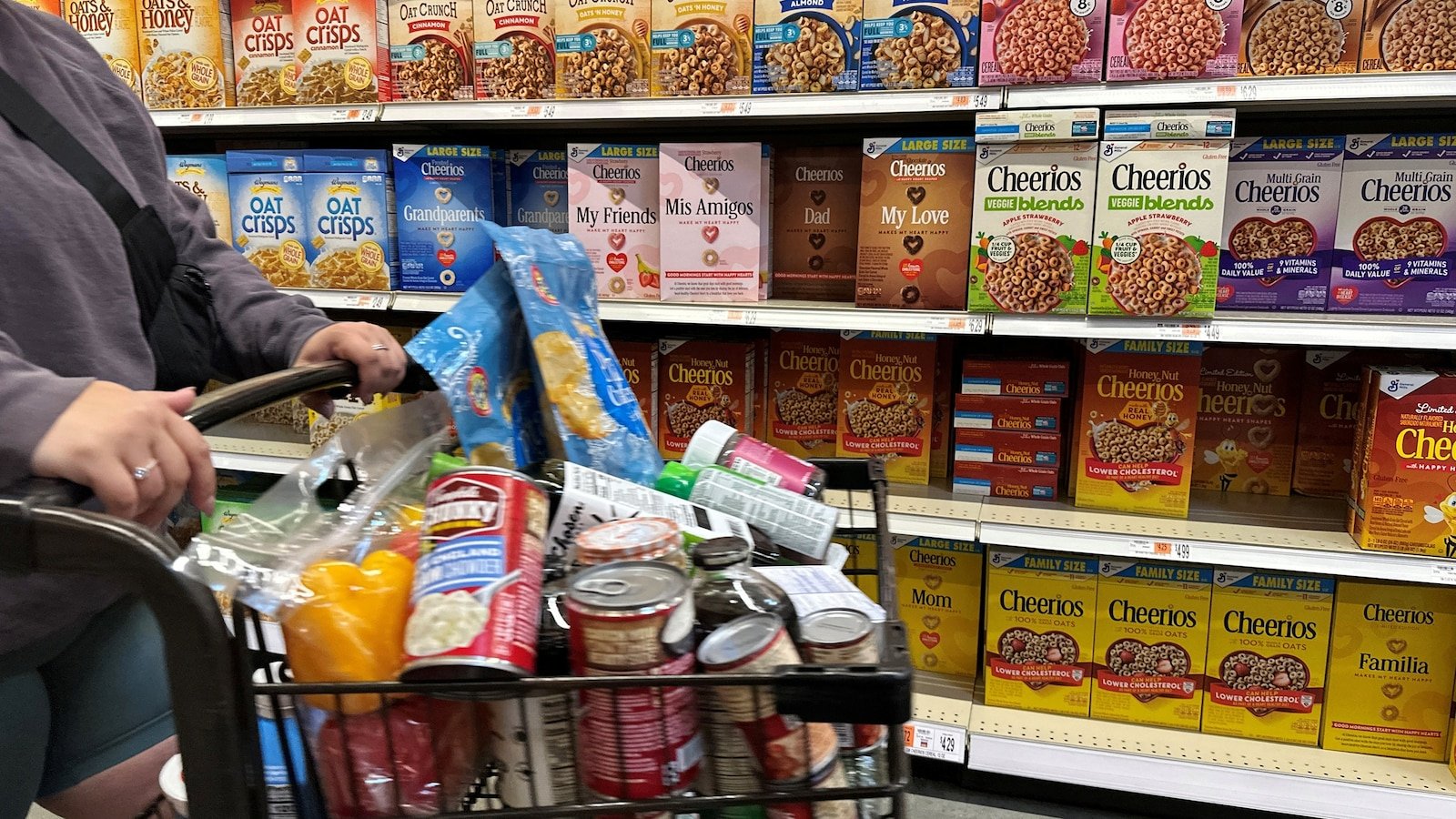President Donald Trump said Friday that the prices of groceries and gasoline are falling, an affirmation that has made repeatedly since he assumed the position.
In a publication on social networks, Trump promoted price levels together with the growth of employment and tax revenues in a list of profits delivered by its rate policy.
“We are only in a transition stage, just starting!” Trump said.
However, the claim of a reduction in the prices of these essential goods is potentially misleading, economists told ABC News. Since Trump assumed office, food price increases have accelerated and gasoline prices have remained essentially flat, Federal Government data shows.
Without a doubt, general inflation has decreased slightly during Trump’s mandate. In January, the inflation rate year after year was 3%; As of March, the most recent month registered, that rate recorded at 2.4%, according to government data. That figure comes well below a peak reached in 2022.
However, even a relatively low inflation level indicates an increase in price levels, since inflation measures the rhythm of change in prices, said David Bieri, economist at the University of Virginia Tech, ABC News.
“Prices are still going up, they just don’t go up so fast,” Bieri told ABC News.
Edible prices
On April 24, Trump told the journalists of the Oval office: “Supermarkets are fallen.” Trump repeated the claim on social networks on Friday, saying: “Edible (and eggs!) Down.”
The prices of the groceries, which constitute a significant part of the household budgets, are measured in the government prices data under the category of “food at home”, which distinguishes these items from those bought in restaurants or other dinner places.
In January, food at housing prices increased 1.9% compared to the previous year. As of March, the inflation rate year after year for these products had accelerated to 2.4%, according to the data of the United States Labor Statistics Office.
When asked about Trump’s statement that food prices are falling, Tucker Balch, a professor of finance at Emory University, said: “I am not aware of any fact that supports that.”
Egg prices, another cost highlighted by Trump, have risen during the first months of the Trump period. In March, egg prices shot 60% higher than a year earlier, according to BLS data.
The Aviar Flu has continued to decin the supply of eggs, raising prices, researchers at the University of Tennessee and Mississippi State University found In February.
On the contrary, wholesale prices of eggs, the amount that supermarkets pay to suppliers, have fallen significantly since Trump assumed the position, food economists said to ABC News. It is not clear when and to what extent the decrease in wholesale prices of eggs will result in relief for consumers, they said.
While food prices are generally increasing, costs for some foods are decreasing. Alimbales such as rice, pasta, potatoes, lettuce and tomatoes recorded lower prices in March than a year earlier, according to BLS data.
“You can always find prices of particular foods that are falling,” said ABC News, Economics professor, Economics professor at the University of Texas in Austin, who studies inflation. “There are probably some people whose price basket is falling due to what they are buying.”
Gasoline prices
Trump said last month that gasoline prices had fallen as low as $ 1.98 in a couple of states. On Friday, Trump expressed a similar statement on social networks, saying: “Gasoline broke $ 1.98 per gallon, lower in years.”
The national average price of a gallon of gasoline is $ 3.18, AAA The data show. No state has an average price close to $ 1.98, as shown in the data.
In Mississippi, the state with the lowest average price, a gallon of gas costs $ 2.66, says AAA.
Even more, government data shows that the average gasoline prices change little since Trump assumed the position.
During the week that ended on January 20, the national average price of a gallon of gas stood at $ 3.10, according to the Energy Information Administration of the United Statesor eia. From the week ending on April 28, the most recent registered, the average price reached $ 3.13, says EIA.
“That puts the prices of gasoline right where they were when Trump assumed the position,” Binder said.
On the contrary, oil prices have collapsed around 25% since Trump took office. In theory, the decrease in the price of oil should eventually reduce the price of gasoline, since oil constitutes the key entry into the refined product that ends in vehicles, Binder said.
The fall in oil prices is not necessarily a positive indicator, they added. The fall in oil prices often suggests expectations of an economic deceleration that would reduce energy demand.
Balch, from the University of Emory, said that the decrease in oil prices resulted from the expectations of a deceleration in global trade after Trump’s rates.
“It is a measure of the expected use of energy in our economy,” said Balch. “It is for Trump’s policies, but it is not a support of their policies.”





